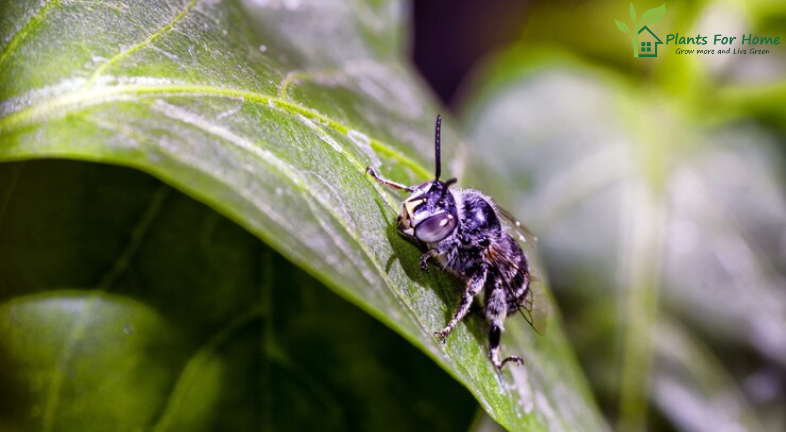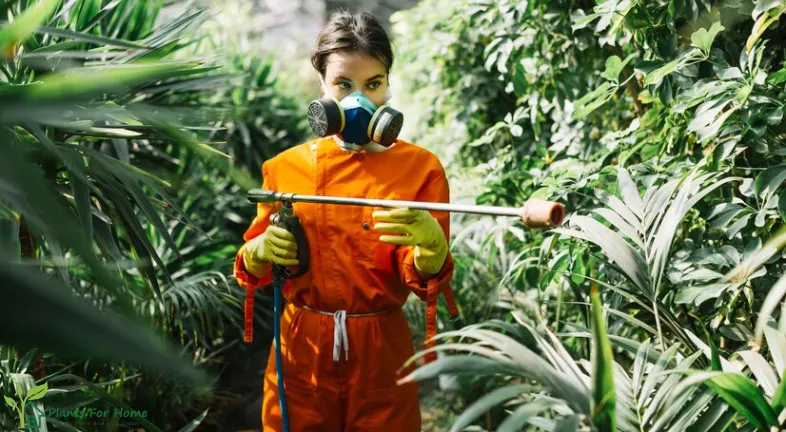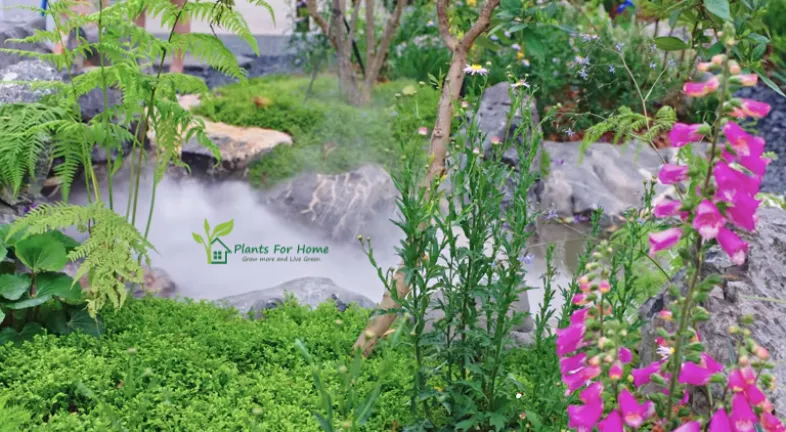HOW TO GET RID OF BUGS ON INDOOR PLANTS?

Notice of Eviction: How to Get Rid of Insects on Indoor Plants
If unsightly bugs decide to make their home among your beautiful houseplants that are providing life to your décor, they can soon become a source of annoyance. Plant parents, do not be alarmed! With the help of this instruction, you will be able to drive out these creepy crawlies and bring back the splendor of your indoor rainforest.
Finding the Offender: Identifying Typical Houseplant Pests

Accurately recognizing these small invaders is the first step towards combating them. The following list of frequent houseplant pests together with warning indicators for each one:
Aphids: These little, pear-shaped insects usually form clusters around buds on flowers and new leaves. They cause wilting, stunted development, and sticky residue known as honeydew by sucking the sap from plants.
Mealybugs: These cottony, white masses frequently congregate on leaf undersides and stems. Their symptoms are similar to those of aphids since they also feed on plant sap.
Scale: On stems and plants, these armored insects resemble bumps or scales. They have a protective layer that makes them tough to remove and available in a variety of colors.
Fungus gnats: Although they don’t cause direct damage to plants, these microscopic flying insects can signal excessively wet soil, which might draw pests and weaken the roots of your plants.
Spider mites: These microscopic mites are hard to spot with the human eye, yet they leave behind delicate webs on leaves.
Thrips: These thin, brown insects cause leaves to twist and warp by leaving microscopic feeding scars that are either white or yellow.
Organic and Natural Pest Control Techniques: A Calm Approach

Many natural and organic ways are useful in getting rid of these pests if you want to take a more mild approach, especially for lesser infestations:
Soap Spray: Fill a spray bottle with water and a few drops of insecticidal soap (found at most garden centers). Directly apply the solution to the insects, paying particular attention to the leaf undersides. Every few days, reapply until the infestation is eradicated.
Neem Oil Spray: A natural insecticide that comes from the neem tree, neem oil is an efficient way to get rid of a lot of pests. As directed on the packaging, combine neem oil and water, then thoroughly spray the plant.
Alcohol Rub: Using a cotton swab to dab individual insects with rubbing alcohol can be a successful treatment for minor infestations. DE, or diatomaceous earth: Aphids and mealybugs are among the soft-bodied insects that this natural powder formed from fossilized algae can kill and dehydrate. Dust the soil’s surface and the area surrounding the plant’s base with a thin layer of DE.
Positive Insects: Bring in organic predators for your plants, such as lacewings or ladybugs. By feeding on pests, these helpful insects contribute to organic population control.
Vital Things to Keep in Mind When Using Natural Methods:

Repeat Applications: In order for natural treatments to be effective, they frequently need to be applied several times throughout time.
Entire Plant: Be sure to cover the entire plant, paying specific attention to the undersides of the leaves, which are common hiding places for pests.
Treat Neighboring Plants: To stop the infestation from spreading, isolate the affected plants and think about treating the surrounding vegetation as a precaution.
Insecticidal Solutions for Intractable Infestations

Insecticidal sprays or systemic insecticides may be required if natural remedies fail if the infestation is really bad. Here’s something to think about:
Insecticidal Sprays: These garden center-available sprays are designed to kill particular pests. To ensure correct application and safety measures, carefully read and abide by the label directions.
Systemic Insecticides: These substances become poisonous to insects that feed on the plant after being absorbed by the plant and moving through its system. When dealing with bugs that are tenacious or hide in the ground, systemic insecticides are a suitable choice.
Key Things to Think About When Choosing an Insecticidal Treatment:

Safety Advice: When using pesticides, always wear gloves and heed all safety warnings found on the product label.
Target Specificity: To prevent damaging beneficial insects, use a pesticide made especially for the kind of pest you’re after.
Environmental Impact: To reduce the impact on the environment, choose insecticidal solutions that are less toxic whenever possible.
Preventive Steps: Maintaining Indoor Plants The secret to keeping healthy, pest-free houseplants is pest-free prevention. The following are some proactive actions you can do:
Isolate any new plants you bring home for a few weeks before adding them to your collection. This is known as quarantine. By doing this, pests are kept from infecting other plants. Appropriate Watering: Excessive watering might draw fungus gnats and promote fungal infections. Only water your plants when the soil feels dry in the top inch. Enough Air Circulation: Having enough air moving around your plants can help keep pests away. Keep plants apart and make sure there is enough airflow.
CONCLUSION:
Consider getting professional assistance if there are serious infestations or if you’re having trouble identifying or controlling the bugs on your own. An accredited pest control professional can evaluate the circumstances and suggest the best line of action.
By taking these actions—identifying the particular pest, selecting the suitable remedy, and adopting good plant.











